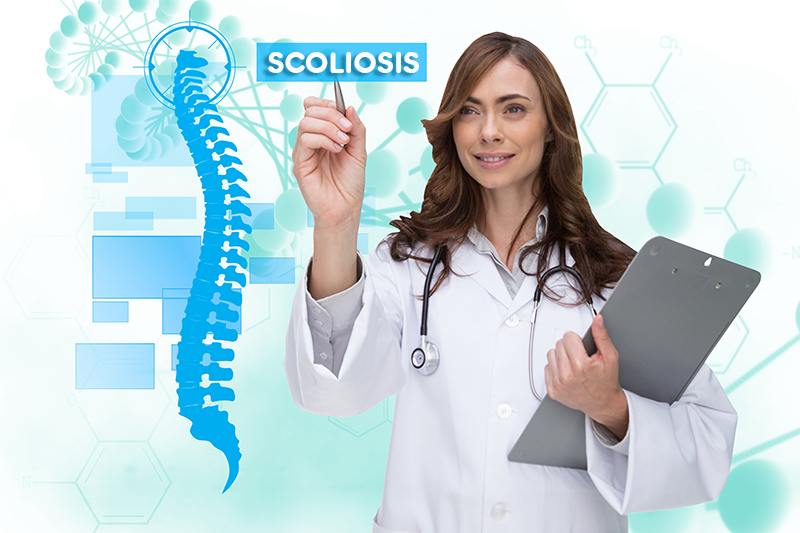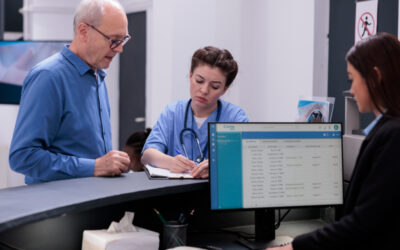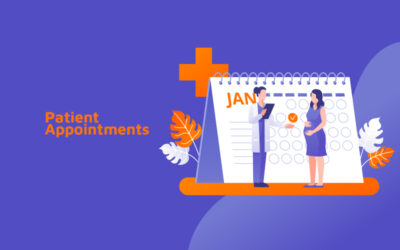A chronic spine condition, scoliosis refers to abnormal lateral curvature of the spine. The condition can affect any part of the spine, but the most common regions are the chest area in the thoracic and thoracic-lumbar regions. As per reports from the American Association of Neurological Surgeons (AANS), about 80 percent of scoliosis cases have no identifiable cause. However, several factors like – birth defects, medical conditions (like cerebral palsy and muscular dystrophy), heredity and injuries and infections of the spine tend to play a crucial role. If left untreated, severe scoliosis can reduce the amount of space within the chest, causing problems for the proper functioning of the lungs.
In addition, the condition can severely impact the quality of life with limited activity, pain and reduced respiratory function. Billing and coding as well as insurance rules and regulations for orthopedic treatments are always changing, which makes the billing process quite challenging. Outsourcing these billing and coding tasks to a reputable orthopedic coding company can help them deal with these challenges and avoid billing errors that can lead to payment denials and delays.
Even though people of all age groups can develop scoliosis, the condition is often diagnosed in childhood or early adolescence. It is typically seen among children aged 10-12 years and is more common in girls than in boys. Children often develop spine deformities that continue to get more severe as they grow. The potential risk factors associated with this condition include – age, family history and sex. Most people with scoliosis (even a mild form) may sometimes cause several complications like – lung and heart damage, back problems and shoulder appearance.
Types of Scoliosis and Symptoms
Generally, scoliosis is categorized into five types which include – congenital, degenerative, neuro-muscular, syndromic and adolescent idiopathic.
- Congenital – when the spine does not form correctly before birth.
- Degenerative – occurs due to wear and tear of the skeletal system (most common among adults)
- Neuromuscular – occurs when nerve abnormalities affect muscles in the spine.
- Syndromic – linked to one of a range of syndromes, including Marfons syndrome and trisomy 21
- Adolescent idiopathic – causes curving and twisting of the spine.
The signs and symptoms of this condition vary depending on the type and degree of scoliosis. Common symptoms include – uneven shoulders, uneven hips/waist, a rotating spine, back pain, problems with breathing, knee pain, headache, chronic fatigue and future spinal kyphosis (widow’s hump) and one side of the rib cage jutting forward.
How Is Scoliosis Diagnosed and Treated?
Diagnosis of this orthopedic condition starts with a physical examination that checks the spinal areas in detail including muscle weakness, numbness and abnormal reflexes. Orthopedists will observe sides of the back with their arms. They will check for spine curvature (in the upper and lower back area) and analyze whether shoulders and waist area are symmetrical. Orthopedists or other specialists may recommend several diagnostic imaging tests like X-ray (to reveal the severity of the spinal curvature) or MRI scan of the lumbar spine as these will help analyze the range and severity of spinal curvature.
Treatment for this condition may depend on several factors such as patient’s age, type of scoliosis, severity of curves, intensity of symptoms and growth, and location of symptoms. For mild or moderate cases of scoliosis, physicians may advise wearing a brace – which helps to prevent further progression of the curve. Other common treatment methods include – physical therapy exercises, Transcutaneous Electrical Nerve Stimulation (TENS) and chiropractic therapy. For severe cases of scoliosis – spinal fusion surgery may be performed to reduce the severity of the spinal curve.
Medical Codes for Scoliosis
Billing and coding for scoliosis can be challenging as it involves several rules related to reporting the condition correctly. Partnering with a reputable medical billing company can ensure accurate coding and medical claim submission for physicians. Orthopedists and other spinal specialists who treat scoliosis must use the relevant medical codes to bill for the procedure. The medical codes used to report scoliosis include –
ICD-10 Codes
M41 Scoliosis
M41.0 Infantile idiopathic scoliosis
- M41.00 …… site unspecified
- M41.02 …… cervical region
- M41.03 …… cervicothoracic region
- M41.04 …… thoracic region
- M41.05 …… thoracolumbar region
- M41.06 …… lumbar region
- M41.07 …… lumbosacral region
- M41.08 …… sacral and sacrococcygeal region
M41.1 Juvenile and adolescent idiopathic scoliosis
M41.11 Juvenile idiopathic scoliosis
- M41.112 …… cervical region
- M41.113 …… cervicothoracic region
- M41.114 …… thoracic region
- M41.115 …… thoracolumbar region
- M41.116 …… lumbar region
- M41.117 …… lumbosacral region
- M41.119 …… site unspecified
M41.12 Adolescent scoliosis
- M41.122 Adolescent idiopathic scoliosis, cervical region
- M41.123 Adolescent idiopathic scoliosis, cervicothoracic region
- M41.124 Adolescent idiopathic scoliosis, thoracic region
- M41.125 Adolescent idiopathic scoliosis, thoracolumbar region
- M41.126 Adolescent idiopathic scoliosis, lumbar region
- M41.127 Adolescent idiopathic scoliosis, lumbosacral region
- M41.129 Adolescent idiopathic scoliosis, site unspecified
M41.2 Other idiopathic scoliosis
- M41.20 …… site unspecified
- M41.22 …… cervical region
- M41.23 …… cervicothoracic region
- M41.24 …… thoracic region
- M41.25 …… thoracolumbar region
- M41.26 …… lumbar region
- M41.27 …… lumbosacral region
M41.3 Thoracogenic scoliosis
- M41.30 …… site unspecified
- M41.34 …… thoracic region
- M41.35 …… thoracolumbar region
M41.4 Neuromuscular scoliosis
- M41.40 …… site unspecified
- M41.41 …… occipito-atlanto-axial region
- M41.42 …… cervical region
- M41.43 …… cervicothoracic region
- M41.44 …… thoracic region
- M41.45 …… thoracolumbar region
- M41.46 …… lumbar region
- M41.47 …… lumbosacral region
M41.5 Other secondary scoliosis
- M41.50 …… site unspecified
- M41.52 …… cervical region
- M41.53 …… cervicothoracic region
- M41.54 …… thoracic region
- M41.55 …… thoracolumbar region
- M41.56 …… lumbar region
- M41.57 …… lumbosacral region
M41.8 Other forms of scoliosis
- M41.80 …… site unspecified
- M41.82 …… cervical region
- M41.83 …… cervicothoracic region
- M41.84 …… thoracic region
- M41.85 …… thoracolumbar region
- M41.86 …… lumbar region
- M41.87 …… lumbosacral region
M41.9 Scoliosis, unspecified
CPT Codes
- 22800 – Arthrodesis, posterior, for spinal deformity, with or without cast; up to 6 vertebral segments
- 22802 – Arthrodesis, posterior, for spinal deformity, with or without cast; 7 to 12 vertebral segments
- 22804 – Arthrodesis, posterior, for spinal deformity, with or without cast; 13 or more vertebral segments
- 22808 Arthrodesis, anterior, for spinal deformity, with or without cast; 2 to 3 vertebral segments
- 22810 Arthrodesis, anterior, for spinal deformity, with or without cast; 4 to 7 vertebral segments
- 22812 Arthrodesis, anterior, for spinal deformity, with or without cast; 8 or more vertebral segments
- 22818 Kyphectomy, circumferential exposure of spine and resection of vertebral segment(s) (including body and posterior elements); single or 2 segments
- 22819 Kyphectomy, circumferential exposure of spine and resection of vertebral segment(s) (including body and posterior elements); 3 or more segments
HCPCS Codes
- L1290 – Addition to thoracic-lumbar-sacral orthotic (TLSO), (low profile), lateral trochanteric pad
- L1300 – Other scoliosis procedure, body jacket molded to patient model
- L1310 – Other scoliosis procedure, postoperative body jacket
- L1499 – Spinal orthotic, not otherwise specified
Living with scoliosis can be challenging. The long term outlook for scoliosis may depend on the severity of the spinal curvature. For mild to moderate cases, the condition won’t interfere with day-to-day activities and functions. On the other hand, individuals with severe forms of scoliosis may have physical limitations.
Knowing the right medical codes related to documenting scoliosis is critical for providers. Partnering with a reliable and experienced medical billing outsourcing company is important to ensure accurate and timely medical claim submissions.




